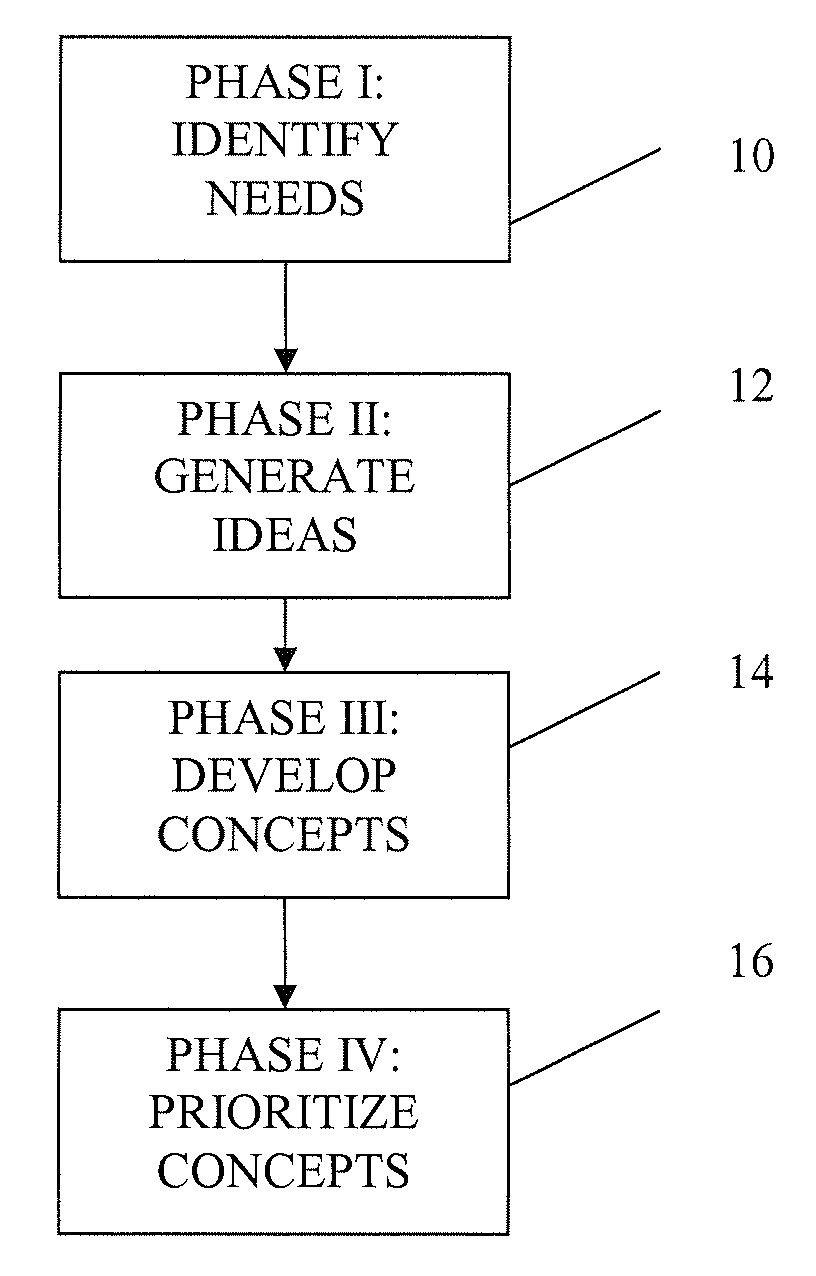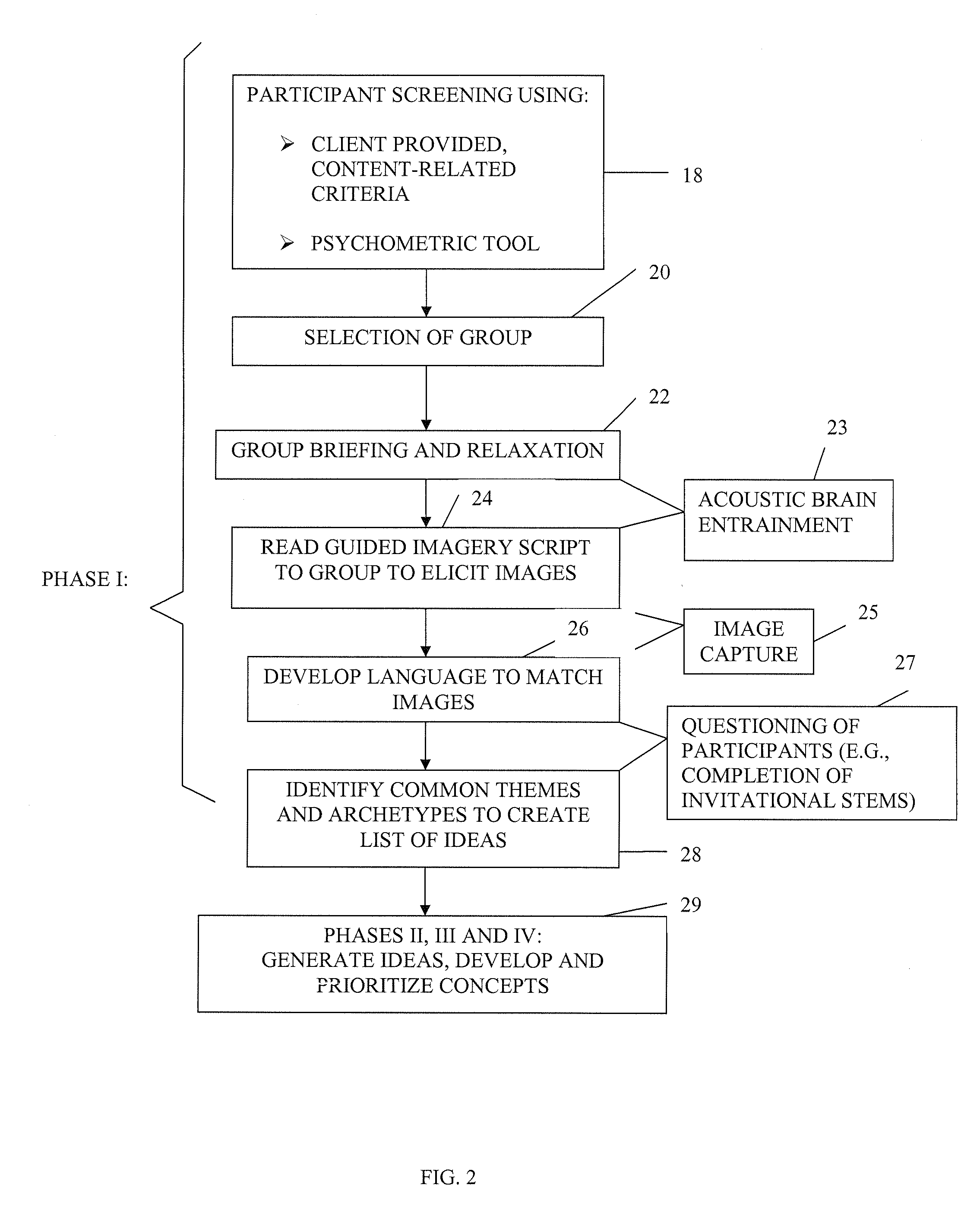Method of Identifying and Prioritizing New Product Concepts and Development
a technology of product concept and prioritization, applied in the field of new product development process, can solve the problems of not being able to put these “needs” into words, the focus group method is very limiting, and people often times do not even know themselves what, so as to achieve deep meaning and interpretive valu
- Summary
- Abstract
- Description
- Claims
- Application Information
AI Technical Summary
Benefits of technology
Problems solved by technology
Method used
Image
Examples
Embodiment Construction
[0013]Referring to the figures, Phase 1 of the process identified at block 10 first involves the identification of needs. For example, a company wants to know what is the next great product they should develop and commercialize which would be a blockbuster hit with their customers. In order to know what kind of product to develop, they first need to know the customer's need that the product will satisfy. This is what they do not know and what Phase 1 of the process aims to identify. Thus, Phase 1 identifies a need or needs. This is accomplished using the inventive method which draws out or “coaxes” a deep-seated need which may be buried within a person's subconscious—a need which the person previously unrecognized and unappreciated as a real need—a need so important that, if a product was offered to satisfy that need, the person would buy it without little or no hesitation. It is therefore of the utmost importance that the need identification process be designed and structured such ...
PUM
 Login to View More
Login to View More Abstract
Description
Claims
Application Information
 Login to View More
Login to View More - R&D
- Intellectual Property
- Life Sciences
- Materials
- Tech Scout
- Unparalleled Data Quality
- Higher Quality Content
- 60% Fewer Hallucinations
Browse by: Latest US Patents, China's latest patents, Technical Efficacy Thesaurus, Application Domain, Technology Topic, Popular Technical Reports.
© 2025 PatSnap. All rights reserved.Legal|Privacy policy|Modern Slavery Act Transparency Statement|Sitemap|About US| Contact US: help@patsnap.com



